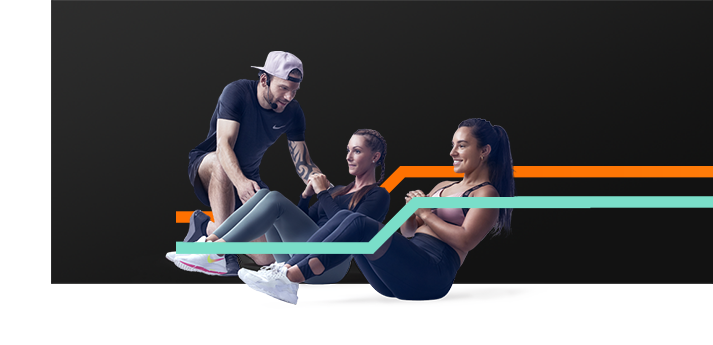Introduction
Quality, health and safety are of great importance to Basic-Fit. Our members and employees must feel comfortable and safe in their sports club. To guarantee this as much as possible, our sports clubs, buildings and sites are protected by cameras. For example, if one of our members becomes unwell or if there is any danger such as aggression, our emergency center (NEN and ISO-certified company alarm center) can immediately contact the emergency services. We are fully aware that camera surveillance also affects the privacy of our members and employees, and therefore we monitor with the utmost care. For example, no camera surveillance takes place in changing rooms or sanitary facilities and, in principle, monitoring only takes place reactively. This means that images are only viewed after an incident has been reported. This camera surveillance regulation sets rules and principles to guarantee the privacy of our members and employees as much as possible. It also offers transparency about our methods. Basic-Fit strives to use camera surveillance in the most honest and transparent way possible. Good to know is that the club has intercom systems, portable panic buttons, fire buttons, cameras and emergency doors.
1. Definitions
a) Access fraud: access to sports facilities by a person who is not a member of Basic-Fit.
b) MARC: Monitoring Alarm Receiving Center, the certified company alarm center of Basic-Fit
c) CSI: the Customer Service Intercom team, a dedicated team that answers the intercoms and acts as the first point of contact in the event of incidents.
d) Data subjects: persons visible on the camera images.
e) General area: areas for general use such as pantries, kitchens or circulation areas.
f) Incident: an unwanted event such as theft, violence, aggression, vandalism, access fraud, other crimes or acute (medical) emergencies, or the suspected occurrence thereof.
g) RSC: The Remote Surveillance Center that handles the follow up and investigation of incidents.
h) Unauthorized persons: persons who are not authorized to enter the building or space or who are acting maliciously.
2. Purpose and scope of camera surveillance
2.1 This regulation applies to Basic Fit International B.V., with its registered office at Wegalaan 60, 2132 JC Hoofddorp in the Netherlands, and all its affiliated legal entities in the Netherlands, Belgium, Luxembourg, France and Spain.
2.2 Basic-Fit performs camera surveillance for the following purposes:
a) For the protection of its members and employees in the event of danger due to nuisance, aggression, violence and other criminal offenses.
b) To protect the health of its members and employees in case of medical urgency.
c) To prevent access by unauthorized persons d) To prevent or investigate cases of damage or theft of goods and property from Basic-Fit, its members or employees.
2.3 The scope of camera surveillance by Basic-Fit is limited to:
a) Monitoring in the Basic-Fit-affiliated sports clubs and other buildings of Basic-Fit and its affiliated companies.
b) Monitoring the sites of Basic-Fit’s affiliated sports clubs and other buildings of Basic-Fit and its affiliated companies, with the exception of branches and sports clubs in France.
3. Conditions and safeguards to protect privacy
3.1 Camera surveillance only takes place:
a) in a way that respects the privacy of our members and employees as much as possible. Camera surveillance never takes place in changing rooms, sanitary facilities, individual offices or other places where employees and visitors may expect a high degree of privacy;
b) in a way that prevents unnecessary or disproportionate monitoring;
c) in a transparent manner, which means that methods like covert camera surveillance or hidden cameras will not be used.
d) only if necessary in General areas. For example, General areas are only monitored if the area also contains a patch panel rack, valuable goods or supplies. The camera in question is only aimed at the object to be monitored and the range is strictly limited, to guarantee the privacy of the users of the general area as much as possible.
3.2 Camera surveillance is by no means intended to monitor Basic-Fit employees during the performance of their work and tasks. The privacy of our employees is respected as much as possible during the performance of camera surveillance and the use of camera images. Only when it appears that an employee is involved in committing violations, as referred to in Article 2.2 of these Regulations, images can be viewed by Basic-Fit's Human Resources department according to their procedures.
3.3 In principle, only reactive monitoring is performed, unless in case of urgent and special circumstances that justify active monitoring. These circumstances must have the immediate aim of protecting the interests as described in Article 2.2 of this Regulation and may only continue as long as these circumstances last;
3.4 Operating the system and viewing the images is reserved for and accessible to a limited group of authorized and trained employees only.
3.5 The camera surveillance around buildings and sites of Basic-Fit and its affiliated companies must be limited as much as possible to their boundaries and must respect public space as much as possible.
4. Locations, nature and purpose of camera surveillance
4.1 The following types of cameras are placed within the sports clubs:
a) Entrance Outdoor and indoor camera aimed at the entrance and the entrance portal to prevent access fraud or unauthorized access.
b) Turnstiles Confrontation monitor above the turnstiles to prevent access fraud or unauthorized access.
c) Sports areas Reactive monitoring by means of smart cameras. The smart cameras can detect signals such as aggression or becoming unwell through motion and sound sensors.
d) GX areas for (virtual) group lessons A camera is placed for the purpose of anonymous people-counting only. The camera is equipped with automatic blurring technology, so that people are not recognizable in the images. A reactive smart camera is also fitted to detect people becoming unwell.
e) Patch panel rack room To monitor the servers.
f) Intercom camera This only records during live contact between the Customer Service Intercom Team and members or employees, to provide remote assistance or to report incidents.
g) Around the building and within the parking area, with exception of the Basic-Fit locations in France. To prevent theft, burglary, vandalism or damage.
4.2 Other (office) buildings and places of Basic-Fit.
a) Entrance of office buildings and other (storage) buildings. Camera aimed at the entrance and inside the entrance portal to prevent unauthorized access.
b) Circulation areas To prevent unauthorized access and burglary.
c) Around the building and within the parking area, with exception of Basic-Fit buildings in France. To prevent theft, burglary, vandalism or damage.
5. Responsibilities in relation to camera surveillance
5.1 Camera surveillance is carried out by the Monitoring Alarm Receiving Center (MARC), the company alarm center of Basic-Fit. In addition, image fragments may be viewed and stored for the investigation and follow-up of incidents
5.2 Camera surveillance is divided into 5 parts, each with their corresponding responsibilities. The management of Basic-Fit takes ultimate responsibility for the whole.
• Part 1: system, IT and technical management
This part and the related responsibilities are further elaborated in a specific protocol under the supervision of the Camera Surveillance Coordinator.
• Part 2: camera surveillance, (live) monitoring
The Alarm Receiving Center (ARC) is responsible for the performance of remote camera surveillance. They receive notifications of incidents via the camera system, when it is triggered, or via the Control Room. After receiving a notification, the ARC can login on the specific camera to investigate and monitor the situation and contact the emergency services if necessary. The procedures and responsibilities of the ARC are further established in Protocol Y.
• Part 3: the intercoms
The Basic-Fit Customer Service Intercom Team (CSI) is the first point of contact for members and employees and receives reports of incidents via the intercom, by telephone or by electronic message. The CSI has live contact via the intercom by means of image and sound. CSI is a dedicated team under the responsibility of the CSI team leader.
• Part 4: incident follow-up
If an incident requires follow-up or further investigation, this will be handled by authorized employees of Basic-Fit's Remote Surveillance Center (RSC). Images can only be viewed if necessary and if the incident is related to the objectives for camera surveillance as described in article 2.2 of these regulations.
• Part 5: supervision on compliance
Compliance with these regulations, the related protocols and procedures is supervised by Basic Fit's Data Protection Officer, Security Officer and Compliance Officer. With regard to the MARC, they are supported in this by the privacy coordinator of the MARC.
6. Image retention periods
6.1 Images are stored locally at our sports clubs for a maximum of 3 working days, after which they are automatically deleted.
6.2 Sound or motion fragments that activate the smart cameras to alarm the ARC are only used for this purpose and cannot be further processed or listened to.
6.3 If necessary, MARC may retain specific image fragments in response to incidents. Storage takes place in a secured storage location. Retention periods have been determined per incident category.
6.4 CSI stores video and audio recordings from the intercom for a maximum of 1 month and only for quality and training purposes.
6.5 As part of the investigation and follow-up of incidents, RSC may secure specific image fragments and store them in a secured storage location. Retention periods have been determined per incident category.
7. Transparency
7.1 Basic-Fit is transparent about the use of cameras and their locations. Basic Fit uses first-line communication in this regard through warning signs and brief information in the sports clubs and other buildings and grounds, and second-line communication by means of publication of this Regulation.
7.2 A map with the installed cameras is available for each sports club. Data subjects may request access to this.
8. Access and security of images
8.1 Basic-Fit takes adequate security measures to protect stored camera images, including, as a minimum:
• (Local) storage encryption.
• Secured server rooms.
• Basic-Fit restricts operation and access to camera images to a specifically authorized group of employees and keeps a record of this.
• The authorized group of employees have been adequately trained, have submitted a Certificate of Good Conduct and signed a confidentiality agreement.
• A secured network for the transmission of images from the sports clubs or other locations.
• Logfiles are created to be able to verify who logged into the system and when.
• The CSI, MARC and RSC are shielded and secured departments.
• Physical security measures for the camera equipment.
• The building shell is protected by access control, among other things.
9. Data subject rights
9.1 In principle, data subjects have the right to access, rectify or delete their data and may submit a request to privacy@basic-fit.com.
9.2 It is also possible to submit a complaint or objection to this regulation and the camera surveillance performed by Basic-Fit. In these instances, data subjects may contact the Data Protection Officer of Basic-Fit directly at privacy@basic-fit.com
9.3 If a data subject is not satisfied with the way a request is handled, it is possible to file a complaint with: For the Netherlands: the Autoriteit Persoonsgegevens via www.autoriteitpersoonsgegevens.nl For Belgium: the Gegevensbeschermingsautoriteit / Autorite de protection des donnees via www.gegevensbeschermingsautoriteit.be / www.autoriteprotectiondonnees.be For Luxembourg: the Commision Nationale pour la protection des donnees via www.cnpd.public.lu For France: the Commission Nationale de l'Informatique et des Libertés via www.cnil.fr For Spain: the Agencia Espanola proteccion datos via www.aepd.es
10. Transfer
10.1 Camera images will not be shared with third parties, except in cases where a competent governmental body has issued a legal claim to this effect, or when another statutory regulation obliges Basic-Fit to do so. Such requests are only handled by the RSC in accordance with their established procedures.
10.2 Basic-Fit concludes contractual agreements with parties who provide services to Basic-Fit and who might be able to view camera images, in order to ensure compliance with the General Data Protection Regulation and this camera surveillance regulation. Strict confidentiality is always agreed as part of this.


